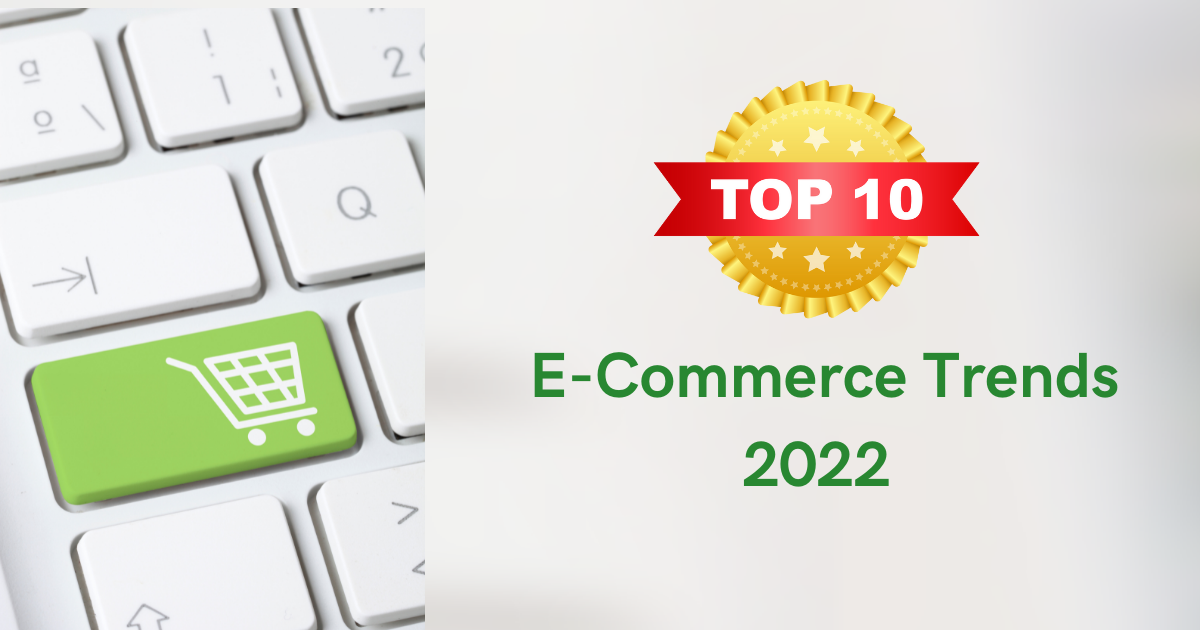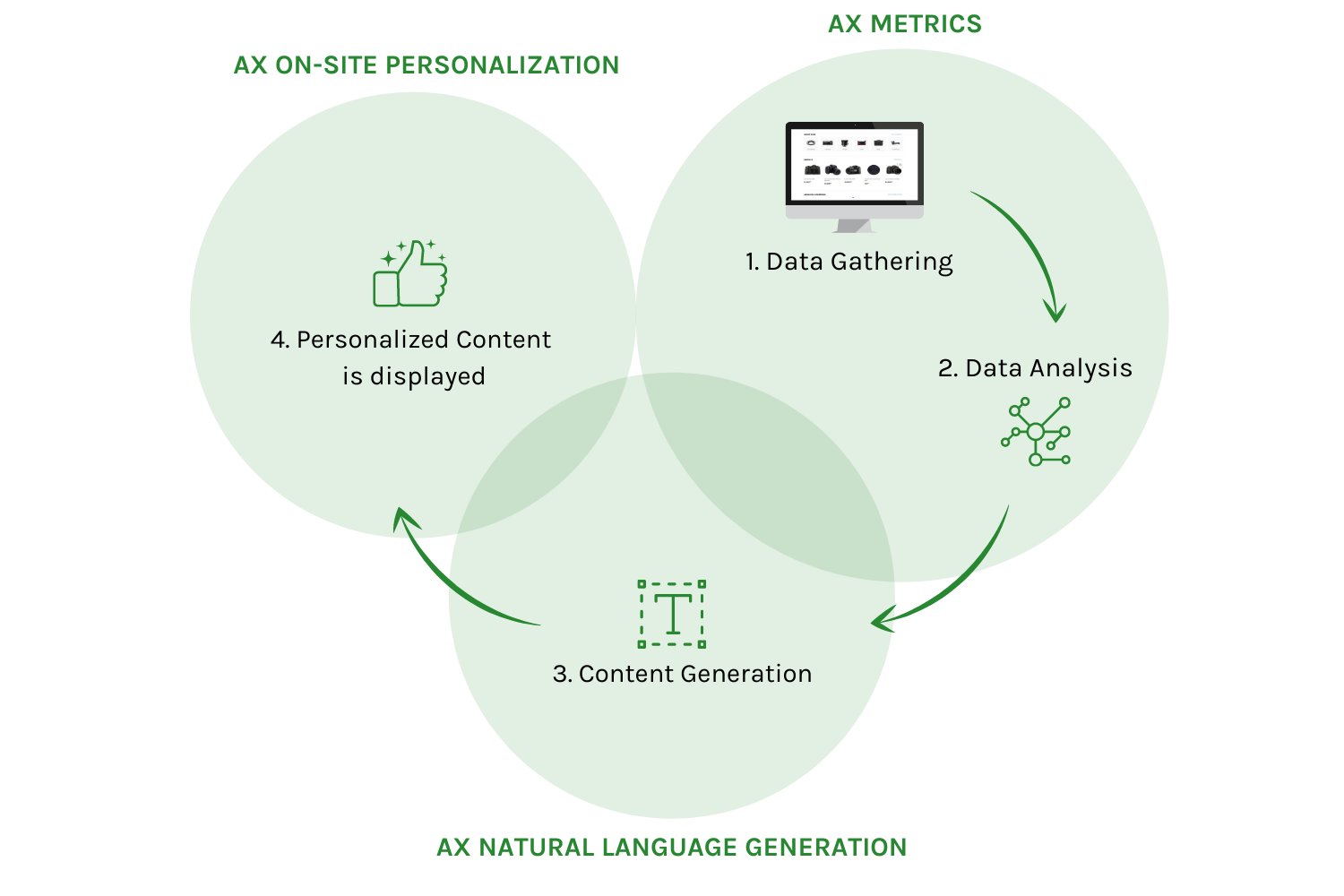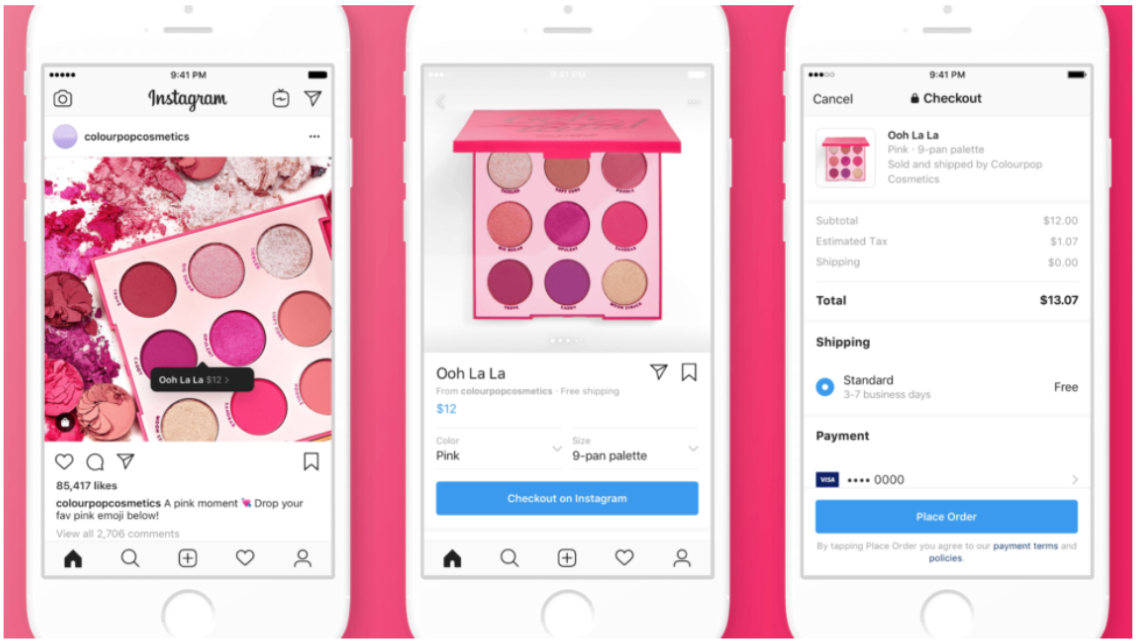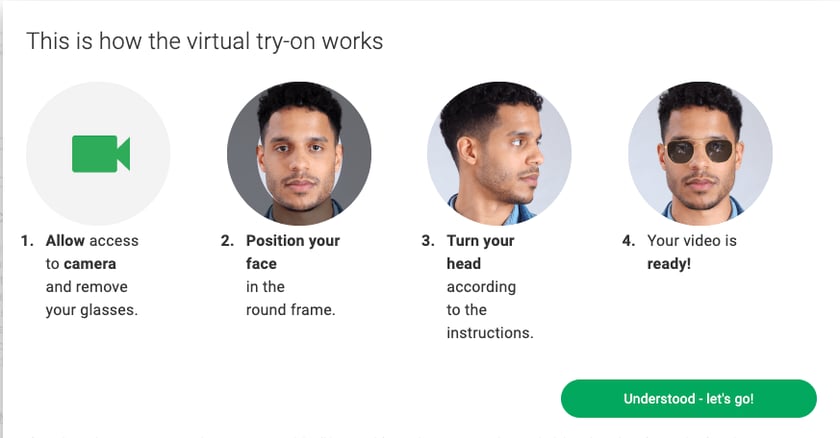The 10 Hottest E-Commerce Trends 2022
Reading Time 12 mins | November 25, 2021 | Written by: Saim Alkan

Experts forecast US e-commerce sales to reach $1,000 billion for the first time in 2022! An incredible figure (DCKAP, 2021).
It is not new that online retail is increasingly making up a larger share of the total sales volume. Nor is it news that the Covid 19 pandemic has caused it to increase dramatically.
In the meantime, the growth rates are also declining slightly as the pandemic has subsided. Nevertheless, online shopping is and will remain an enormously important topic.
In order for you as an e-commerce retailer to secure a piece of that pie and not get left behind by the competition, you should look into the hottest trends for 2022:
A.Customer loyalty with the right approach
B. Different Shopping and Payment Options For a Good Customer Experience
C. Purchase Incentive through Visual Support and further topics
A. Customer Loyalty With the Right Approach
The aim of every online retailer is to turn the users who visit his website into customers and build long-term loyalty. How can this be achieved?
1. How First-Time Buyers become long-term Customers
What are the options for keeping first-time buyers loyal in the long term? This is a question of great importance for every online retailer.
One possibility for this is a personalized textual approach to first-time buyers when they visit an online store for the first time.
Personalized content created on the basis of data sources using software for automated product descriptions and content makes this possible.
The choice of products on the Internet is almost endless for customers, and competition between retailers is equally high. A strategy is thus needed to turn first-time buyers into long-term customers.
The overwhelming number of retailers and offers encourages shoppers to jump from one retailer to the next. For this reason, e-commerce retailers have to do their utmost to build a sustainable relationship with shoppers.

Apart from targeting first-time buyers, personalization in e-commerce is now a field that can no longer be ignored.
2. The Innovation among E-commerce Personalization Options
There are a wide range of ways to do personalization in e-commerce that offer online retailers opportunities and benefits. For example, they have the option of dyeing shoes to their own taste or creating the scent of a perfume on their own.
A new feature is that the content can now be displayed individually adjusted to the respective page visitor. This is then true content personalization.
This is possible with the AX Semantics product "Personalized Commerce". With its help, customized product descriptions are individually displayed to the user. Depending on whether the visitor accesses the store for the first time, or has already chosen a product in their shopping cart, different descriptions are displayed for one and the same product.
There is only first-party-real-user-data being used, which makes the entire process GDPR and CCPA compliant.
A customer could hardly wish for a more individual and customized approach!
Consumers wish to be personally provided with customized information that is relevant to them. When shoppers are personally addressed, the likelihood of a purchase increases considerably (McKinsey, 2021). The personalization of a customer's online shopping experience is the key to their satisfaction.

B. Different Shopping and Payment Options For a Good Customer Experience
Online shopping has become a standard shopping method for most people. However, computers are no longer the only tool used in this process. Simultaneously, the various payment options available online are playing a greater and greater role for consumers. In the following section, the various shopping and payment options are presented in greater detail.
3. Convenient Shopping from Anywhere in the World with Mobile Shopping
Shopping with mobile devices such as smartphones, called m-commerce, is becoming an increasingly important part of online retailing.
In the U.S, 4 out of 5 customers shop online and more than half of them use their smartphones for this, while in Europe 55% of consumers shop using their smartphones (Webscoot.io, 2021).
This trend was fuelled by the large number of mobile payment integrations that significantly simplify mobile shopping. The online retailer who does not already offer a mobile shopping option needs to change this as soon as possible.
Whoever has not yet designed their online store or newsletter to be mobile-friendly has to take this step first with regard to the increasing importance of m-commerce. After all, mobile shopping is already more than a trend and the online retailer who is not following this trend will definitely be left behind by the competition.
4. Shopping by Voice Command: Voice Shopping
Voice shopping is not nearly as common as mobile shopping. Voice assistants such as "Okay Google," Amazon's Alex, and Apple's Siri are now well-known when it comes to playing songs or asking for the latest news.
In the future, these devices will also play a greater role in product shopping.
Although there are still many hurdles to overcome when it comes to voice shopping, the online retailer who wants his business to be well-positioned for the future should not neglect this trend.
With no visual elements to support them, customers opting for this comfortable voice-controlled version of shopping will stick with products that require little or no explanation, for example groceries and household goods.
However, even though the lack of any visual features and the development work regarding different languages, accents and customer behavior is still pending.
Voice shopping is nonetheless a trend that is here to stay in the coming future.
5. Customer Loyalty through various Payment Options
If the payment process is complicated or confusing in the end, there is a risk that buyers who are actually interested in the product will ultimately abandon the purchase. In order to prevent this and keep customers loyal, online retailers must offer a wide range of payment options.
When it comes to payment options, it's important to know where your customers are located. Payment in Germany is still mainly made via bank transfer after purchase against invoice, PayPal in second place, AliPay and WeChatPay are the top payment systems in Asia, while ApplePay is at the forefront in the USA.
Therefore, online stores need to carefully consider where their operations are located and which payment options are therefore more sensible to offer.
The world is becoming more globalized and online shopping is likely to play a permanent role in all our lives, which means that e-commerce retailers should constantly keep up-to-date regarding payment options and the requirements of their customers in terms of payment options.
6. Improved Customer Experience through Social Commerce - Shopping via Social Media
Not only HOW you pay, but also WHERE you pay plays an important role for customers in terms of the customer experience.
In this regard, social commerce, in other words shopping directly via a social media platform, is increasing as a form of online shopping. About 74% of users are relying on social media when making purchasing decisions (Webscoot, 2021). Yet a large percentage of them, however, would like to buy directly from the social media platform they are currently on.
This is where Instagram is a leader. With Instagram Shopping, visitors were formerly redirected to an e-commerce website when they wanted to make a purchase. Now, with Instagram Checkout, potential buyers can make payments directly on Instagram without being redirected to another site. This has a huge potential given the fact that more than 500 million people use the platform on a daily basis.

Along with the Instagram checkout, the Facebook stores and the integration of Shopify on TikTok also demonstrate that social media is developing into sales platforms that should under no circumstances be underestimated.
As we know, influencer marketing is no longer simply a trend, it is now an established part of marketing. Through platforms such as TikTok and Instagram, influencers reach a wide audience and encourage their followers to buy the products they promote.
C. Purchase Incentives through Visual Support and further Topics
It is particularly important to display the products in an attractive way online. Ultimately, they can not be touched physically and examined more closely by the potential buyer.
Nevertheless, there are various ways to create a positive product experience. This and two other important e-commerce trends will be looked at in more detail in the following section.
7. Higher Purchase Probability through Visual Commerce
Customers want to see what they buy. The trend is changing from the simple product photo to more interactive content such as rotating 360-degree images and videos. In this way, the potential buyer is provided with more in-depth insights on the product and the likelihood of a purchase increases.
Without visual support, it is almost impossible to generate interest in a product. Augmented reality is the next step.
8. Better Product Experience through Augmented Reality (AR)
While online retail has accelerated in the last two years, many people still prefer to buy a product in a stationary store. In stores, they can look at it from all sides, touch it, or try it on.
On top of that, numerous orders are being returned and re-ordered simply because the size ordered didn't fit or the color was different from what was displayed on the screen.
This situation can be changed if retailers use augmented reality (AR) alongside traditional images. AR technology enables customers to see the products on offer in the store by integrating them into their lives, in other words. This provides the customer with a CX that is just as good as in stationary retail.
AR is being successfully used in furniture retail, for instance. The app IKEA Place is a particularly good example here. The furniture retailer virtually furnishes its customers' homes with the help of the app.
Another good example is Mister Spex, an online eyewear store that offers virtual try-ons of the available models.

When it comes to AR, there is still a great deal of room to grow. In order for it not to remain just a game, it needs to provide real added value for both sides, retailers and customers as well. Nevertheless, it can be assumed that the areas of application and possibilities of AR would increase in the future and also generate expanded benefits for e-commerce.
9. More Flexibility and Control for Retailers through Headless E-commerce
One of the main features of headless e-commerce is that backend and frontend are technically separate from each other. To ensure that both sides function despite their technical independence, they must be able to communicate with each other. This is achieved by using interfaces (APIs) that connect the individual components.
A major advantage of headless e-commerce is the level of flexibility it provides, allowing retailers to have greater control over their website's UX and UI, as well as design their frontend to guarantee a smooth customer journey and satisfied customers.
Usually, e-commerce platforms function in such a way that the frontend and backend are closely linked. Any changes made in the backend therefore directly trigger changes in the frontend. The drawback for online retailers is the fact that they are bound to the functionality and technical specifications of the software manufacturers.
Headless Commerce solves this problem.
10. Customer Persuasion with the Topic Sustainability
Sustainability is a way for companies to win the loyalty of buyers who are increasingly aware of the importance of environmental issues.
Sustainability has been a firmly grounded topic in the public eye ever since Fridays for Future if not before. Particularly among the younger generation, sustainability remains a top priority.
Therefore, online retailers should be open-minded towards the topic of sustainability and see it as a chance to distinguish themselves from others.
According to a survey, 75% of the people surveyed would gladly give up any additional packaging and 32% would pay more for a product if it was truly manufactured sustainably. In other words, green consumerism is gaining ground.
More sustainable products, fast degradable packaging or recyclable materials are ways for companies to stand out in this area and attract shoppers who are increasingly aware of the need to be environmentally friendly.
What is your opinion?
There are certainly other developments that deserve attention besides the 10 e-commerce trends listed above for 2022.
All these trends, however, have one thing in common: their aim is to provide customers with full service through the customer journey and to guarantee a positive shopping experience.
Sources
DCKAP (2021): E-Commerce Trens in 2022 to watch out, https://www.dckap.com/blog/8-ecommerce-trends-in-2022/, access: 08.12.2021
McKinsey (2021): Personalizing the customer experience: Driving differentiation in retail, https://www.mckinsey.com/industries/retail/our-insights/personalizing-the-customer-experience-driving-differentiation-in-retail, access: 08.12.2021
Webscoot (2021): eCommerce Trends 2022: 10 Trends Driving the Future of eCommerce, https://webscoot.io/blog/ecommerce-trends-2022/, access: 08.12.2021
Ionos (2021): Die 9 besten PayPal-Alternativen im Überblick, https://www.ionos.de/digitalguide/online-marketing/verkaufen-im-internet/die-besten-paypal-alternativen/, access: 08.12.2021
Oberlo (2021): Instagram Shopping: so verkaufst du 2022 auf Instagram, https://www.oberlo.de/blog/instagram-shopping-guide, access: 08.12.2021
Nosto (2021): 10 Stats that Reveal How Consumers Feel About Sustainability in Retail, https://www.nosto.com/blog/10-stats-consumers-sustainability-retail/, access: 08.12.2021
Saim Alkan
Saim Rolf Alkan is Chief Executive Officer at AX Semantics and a pioneer in the field of automated content generation. After successfully working in content for years, he decided that businesses needed a better tool: one that would allow man and machine to work together to produce the volume of content needed to thrive in the digital age. Saim developed a content solution that generates high-quality texts from data in 110 languages for use in industries including e-commerce, publishing and finance. He is also a lecturer and speaker in the fields of online communication and "robot journalism" and has written several books and numerous articles.

